Having the proper gas line size is crucial when installing a high BTU appliance like a 30000 BTU heater. An undersized gas line will lead to insufficient gas flow and pressure, resulting in low heat output, and even unexpected shutoffs.
Knowing what size gas line for 30,000 BTU heater ensures safe, efficient operation and optimal heating capacity. Read on to learn the recommended gas line size for a common 30000 BTU heater and how to avoid issues caused by inadequate gas supply.
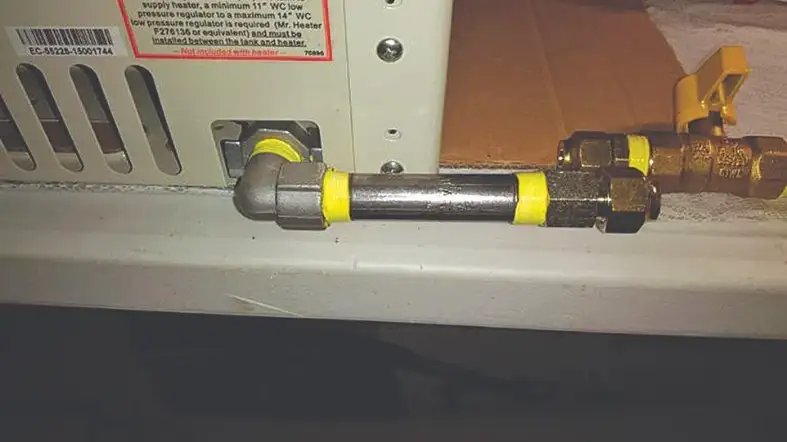
What Size Gas Line For 30000 BTU Heater
For 30000 BTU heater, you will need a 3/8-inch gas line . This is because the average home uses about 1000-1200 cubic feet of natural gas per day. If you have a lot of appliances that use natural gas, you might need a more extensive line.
The capacity of Pipe (BTU x 1000) at ½ psi Copper:
| Nominal Pipe Size COPPER (in) | pipe Length (ft.) 10 | pipe Length (ft.) 20 | pipe Length (ft.) 40 | pipe Length (ft.) 80 |
|---|---|---|---|---|
| 1/4 (3/8) | 35 | 25 | 17 | 12 |
| 3/8 (1/2) | 75 | 50 | 35 | 25 |
| 1/2 (5/8) | 150 | 105 | 70 | 50 |
| 5/8 (3/4) | 265 | 180 | 125 | 85 |
| 3/4 (7/8) | 380 | 260 | 180 | 120 |
| 1 (1 1/8) | 805 | 555 | 380 | 260 |
| 1 1/4 (1 3/8) | 1450 | 995 | 685 | 470 |
The capacity of Pipe (BTU x 1000) at ½ psi Iron Pipe:
| Pipe Size (in) | Pipe Length (ft.) 10 | Pipe Length (ft.) 20 | Pipe Length (ft.) 40 | Pipe Length (ft.) 80 | Pipe Length (ft.) 150 | Pipe Length (ft.) 300 |
|---|---|---|---|---|---|---|
| 1/2 | 235 | 160 | 110 | 75 | 55 | 35 |
| 3/4 | 490 | 340 | 230 | 160 | 115 | 80 |
| 1 | 925 | 640 | 440 | 300 | 215 | 145 |
| 1 1/4 | 1900 | 1305 | 900 | 620 | 440 | 300 |
| 1 1/2 | 2850 | 1960 | 1345 | 925 | 660 | 450 |
| 2 | 5490 | 3770 | 2590 | 1780 | 1270 | 870 |
| 2 1/2 | 8740 | 6010 | 4130 | 2840 | 2020 | 1390 |
| 3 | 15455 | 10620 | 7300 | 5020 | 3570 | 2450 |
| 4 | 31525 | 21670 | 14890 | 10230 | 7280 | 5010 |
| 5 | 57030 | 39200 | 26940 | 18520 | 13180 | 9060 |
| 6 | 92350 | 63470 | 43620 | 29980 | 21340 | 14665 |
| 8 | 189750 | 130410 | 89630 | 61600 | 43840 | 30135 |
How To Determine Gas Line Size For 30000 BTU Heater
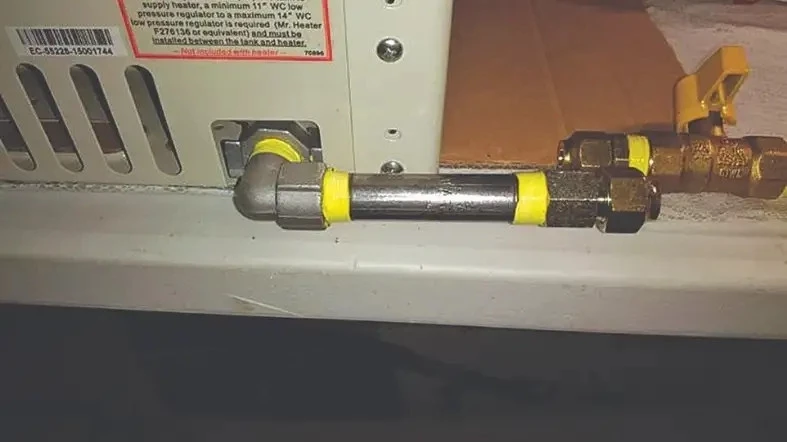
It would be best to consider a few factors when determining gas line size for your 30000 BTU heater.
These include the number of appliances you have, the size of your home, and the amount of natural gas you use daily.
Then follow the below step to determine the Gas Line Size for the 30000 BTU heater:
- Determine the number of appliances you have that use natural gas. If you have a lot of devices that use natural gas, you will need a more significant gas line. Because each appliance uses a certain amount of gas, having multiple instruments can add up quickly.
- Measure the size of your home in square footage. The size of your home also affects the size of the gas line you need. If your home is huge, you will need a more extensive line to deliver enough natural gas to all the rooms. On the other hand, if your home is smaller, you might get away with a smaller line.
- Find out how much natural gas you use daily (in cubic feet). This is important because it determines how much natural gas your home needs. You will need a more significant line if you use a lot of natural gas daily. However, if you use less natural gas, you might get away with a smaller line.
- Use the following formula to determine the appropriate gas line size: A number of appliances x square footage of home (in feet) / 1000 = gas line size in inches. For example, if you have four appliances and your home is 2000 square feet, you would need a 1/2-inch gas line.
- Select the next highest gas line size if you are unsure. Based on the factors above, you will need a 3/8-inch gas line for your 30000 BTU heater. This is because the average home uses about 1000-1200 cubic feet of natural gas per day. It is better to have a gas line that is too big than too small.
Proper Gas Line Size For A 30,000 BTU Heater
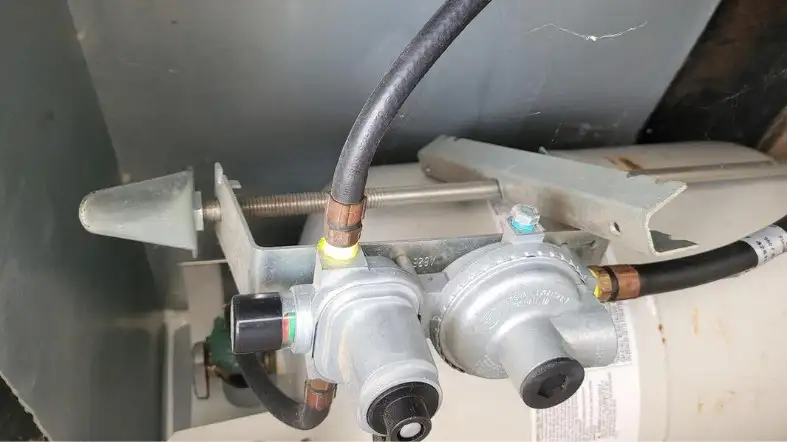
In order for natural gas heaters to function correctly, the fuel line must be able to accommodate the amount of gas needed to run efficiently.
The size of the fuel conduit, be it copper tubing or pipe, is based on two factors: the thickness of the tubing/pipe and how far the gas must travel to reach the heater.
Point Of Delivery BTU Capacity
Before selecting the proper thickness for the gas line, you must first understand how much natural gas your 30,000 BTU heater uses.
All appliances that use natural gas as a fuel are rated by British Thermal Units or BTUs, a unit of energy measurement.
One BTU is equivalent to about 1/25th of a watt, or the amount of energy required to raise one pound of water by one degree Fahrenheit.
If the pressure at the delivery location is much higher than necessary, you’ll need to lengthen the pipe to allow for it.
Get in touch with a professional to determine your pressure at the delivery location.
Pipe Length
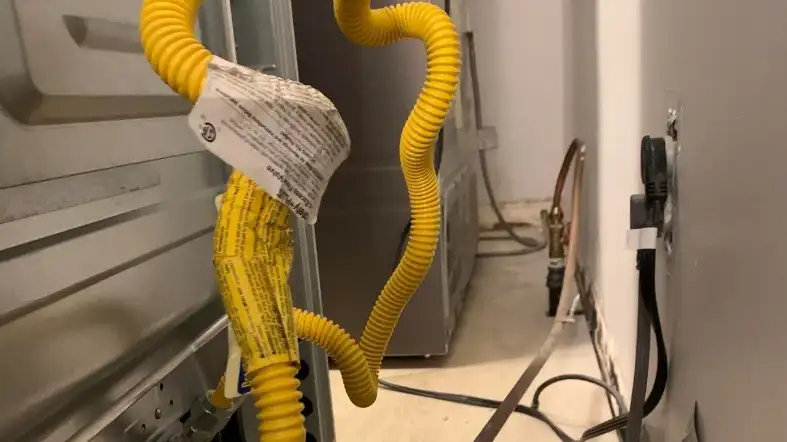
The length of the pipe determines the pressure delivered to the heater at the moment of delivery. The further the natural gas travels through the piping.
The lower the pressure will be by the time it reaches its destination.
The type of pipe used to transport natural gas is also a factor in determining how much pressure is lost throughout its length.
For example, a 3/8-inch pipe of 10 feet will exert a water column pressure of 95.
However, the same diameter pipe at 80 feet in length would decrease the pressure significantly to 31.
Appliance Type
The amount of gas required each hour is determined by the type of appliance you connect to your gas line.
A basic rule of thumb is that one BTU is needed for each cubic foot of space the device is meant to heat.
This means a 30,000 BTU heater would require a fuel line that can transport at least 30 cubic feet of natural gas per hour.
In addition to the other appliances, you might have connected to the same line.
Diameter Of The Pipe
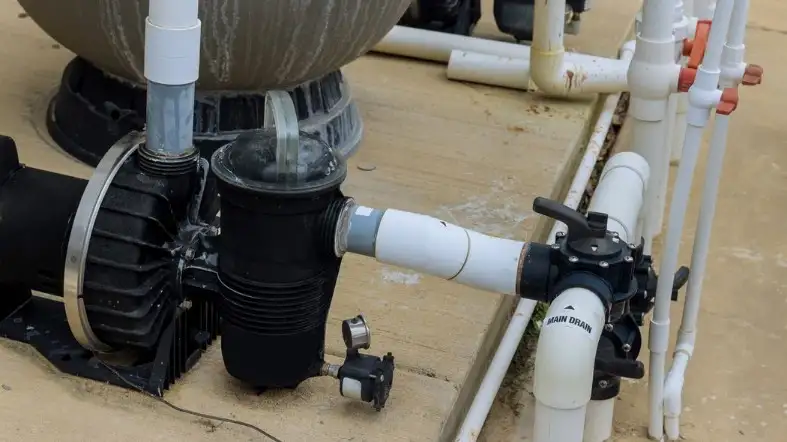
Now that you understand how much natural gas your appliances are using and how long the pipe must be, you can determine the diameter of your fuel line.
The nominal diameter is the pipe’s external diameter, which in this case is 3/8 inch. Besides, the nominal size is closely related to the interior diameter of the pipe.
This helps determine how much pressure the pipe can withstand without bursting. As a general rule, the longer the pipe, the lower the pressure it can withstand.
That’s why you need to consider both the length of your gas line and the number of appliances connected to it when determining the diameter of the pipe.
A pipe’s expandable pressure is inversely proportional to its thickness-to-diameter ratio. In other words, as a pipe’s diameter increases, the pressure it can withstand decreases.
Because the walls become thinner in relation to the circumference. So, a 3/8-inch pipe can support up to 0.6 PSI of pressure for every 100 feet of length.
This means that a 30,000 BTU heater connected to a 3/8-inch pipe that is 80 feet long would need a regulator set at 11 inches of water column (WC) to keep the gas flowing correctly.
If you have multiple appliances connected to the same line.
You will need to add up the total BTUs for all the appliances and use that number to determine the proper diameter for the pipe.
FAQs
How Much Natural Gas Does A 30000 BTU Have?
A Therm of natural gas will keep a 30,000 Btu wall heater running for 3.3 hours. Which means that it only costs $.28 per hour to operate the heater using natural gas.
Also, a 30,000 Btu heater will consume 1 cubic foot of natural gas per hour.
How Much Space Will A 30000 BTU Propane Heater Heat?
A 30,000 BTU propane heater can heat a space that is up to 1,000 square feet. Besides, a 30,000 BTU propane heater is equivalent to a 9,000-watt electric heater.
How Much LP Will A 30000 BTU Heater Use?
A 30,000 BTU heater will use about 1/3 gallon of LP per hour. A gallon of propane weighs approximately 4.2 pounds, and its burn rate is about 100,000 BTUs per hour.
Final Thoughts
Now that you know how to determine the proper diameter for your natural gas line, it’s time to get started on your project.
Natural gas is a safe and efficient way to heat your home, but it’s essential to understand the risks before beginning any project.
